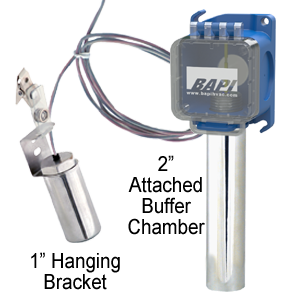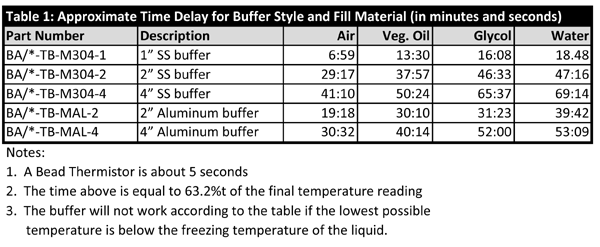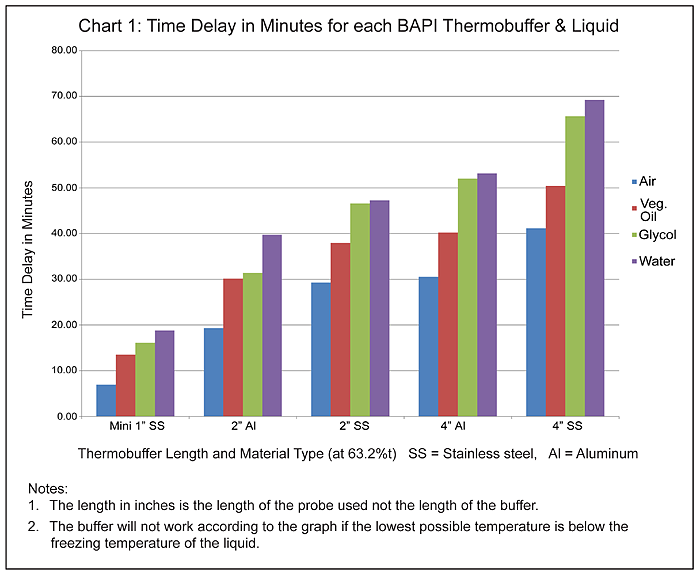BAPI’s Thermobuffer Temperature Sensor is used to simulate the temperature change of the contents of a freezer or cooler rather than the air temperature. The buffers are designed to be filled with food grade glycol (or can be left empty) to slow down the temperature response time. The slower response time eliminates temperature spikes associated with frequent door opening and decreases false alarms while maintaining long-term accuracy.
The Thermobuffer is available in three probe lengths: 1”, 2” and 4” to offer various time delays. BAPI Thermobuffers save valuable shelf space by mounting to a wall or hanging from a clip. The unit is offered with a variety of temperature sensors and/or transmitters to interface with most monitoring systems and the buffer is available in machined 304 stainless steel or aluminum.

Performance Chart Overview
The greater the mass of an object, the slower the overall reaction time. This is why a low mass sensor like a thermistor bead has very fast reaction time. As more mass is added around the sensor to protect its delicate wire connections or ingress of water, the response time slows. The Thermobuffer takes advantage of this phenomenon to slow the temperature response time and mimic the slow temperature change of the contents in a refrigerator or freezer. This delayed response can never perfectly match the contents’ response, but the concept can be used to prevent irritating high or low temperature alarms seen with lower mass sensors.
BAPI offers 1”, 2” and 4” probes in buffers which can be filled with various liquids to further fine-tune the mass and alter the sensor response time. In this way the sensor can be made to more closely match the actual refrigerator contents being monitored. On the following page are the approximate delay times tested for the BAPI Thermobuffer.



Conclusion
Most refrigerator applications will work best using the Mini 1” SS Thermobuffer hanging under the shelf. Large walk-in coolers have more mass and may have the door open for much longer for restocking, so a longer buffer time may work best.
Steps to determine the proper Thermobuffer to use:
1. Determine the normal time contents of the freezer/refrigerator.
2. In what time-span and what temperature would the contents in the freezer/refrigerator be in danger of spoilage?
3. Cut this time-span in half and select the Thermobuffer that best fits the halved time criteria.
If you have additional questions, please call your BAPI representative.



